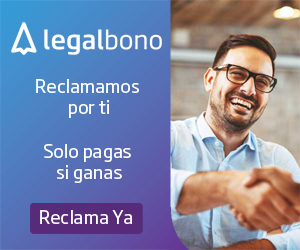Intellectual property: Copyright, trademarks and patents
Intellectual property laws protect the rights of the copyright, trademarks and patents. Through a series of contracts that we will see you can improve and ensure the protection of your confidential information. You can even restrict how to use and manage this regarding other businesses or individuals.
Why is it important to protect the IP?
Whether you’re author, producer, broadcaster or management you have to know that intellectual property law was drawn up to protect your creations and inventions. This allows others to use your creation under the limits which the PI states, ensuring the interests of your business.
It is very important to protect the IP in your business, since this can have a great value for your company in the market. Thus, you guarantee so your potential benefits in the future:
- On one hand, it is possible that potential investors want to see how you protect your intellectual property.
- On the other hand, if you decide to sell your business, potential buyers will want to be sure that you have carried out appropriate steps to protect intellectual property that are going to acquire.
What does protect the intellectual property law?
- Copyright
- Trademarks
- Patents
The first step to protect your ideas is to go to an expert in intellectual property for the registration of your creation.
Consider too the possibility of using a model of confidentiality agreement before sharing confidential information with another company.
If you want to sell or transfer your intellectual property, you can also use a document of transfer of intellectual property rights.
Both the copyright (copy rights), brand and patent are different ways in which intellectual property protects copyright through specific measures.
What is the copyright?
The copyright is the way in which intellectual property protects creative works such as literary, musical compositions, intellectual works and artistic works (including novels, software, painting and photography, databases, maps, drawings, etc.).
If you are the owner of a copyright, you have exclusive rights on it. Prevents other people to copy, modify or sell your right without your permission. As a holder of that right, only you can decide freely who may use your work and how.
Copyright protects automatically since the author created the work, without having to be published or recorded. However, it is always advisable to register the work.
Protect your copyright
In the majority of European countries, including Spain, copyright is protected for the lifetime of the author, prolonging it 70 years after death. If you publish copyrighted material, follow the following tips:
- Register your right to copy: attend to the corresponding entity for the registration of your right. In addition, there are different sites that manage copyright through the payment of a “canon”.
- Mark it with the © symbol.
- Followed by your author name.
- And year of creation.
The reasonable use
It is worth to add here, that there are ways to use the registered copyright without violating it. The so-called “fair use”, allows to use material protected by copyright under certain assumptions without having to ask permission, for example:
- The incorporation of fragments in comments, quotes in news and reviews.
- Copies for private and personal use.
- Use of material with copyright in teaching.
- In research projects.
Thereby, the reproductions for professional or business use, as well as reproductions from physical media that are not owned by the user are excluded. Include those not acquired by commercial sales and communication to the public, unless the individual reproductions of works which are accessed through a legitimate act of public communication.
Trademark
Trademark protects branding (trade names, slogan, logos and symbols used for commercial purposes). Its purpose is to identify and distinguish the origin of a particular commercial product, since a consumer can be confused and think that you’re buying a product from another manufacturer. But to register a trademark does not prohibit another company to manufacture the same product or offer the same service, always under a different brand.
Protect your trademark
For the protection of the mark, it has to be registered individually in each country. Also has to be renewed periodically (usually every 10 years). Marks cannot be registered internationally, although there are international registration systems applicable to members of that system. For example, the Community Trademark System (CTM) that covers all the Member States of the European Union or the Madrid System for International Registration of Trademarks which involves many countries.
What is the patent?
If you create an invention or make a new discovery, the patent is the best way of ensuring their protection. This gives inventors rights of property in order to prevent that any other can make, use or sell the invention patented without the consent of the owner for 20 years from the date of application.
By inventions and discoveries processes are included, formulas, designs of tools, equipment and devices; even the directions for use of things found in nature. One can distinguish three types of patents:
- Use patents: for example, a new machine, the steps to manufacture something (procedure) or methods of molecular synthesis.
- Plant patents: for example, a new variety of strawberries or corn.
- And (industrial) design patents: for example, the design of an ergonomic plastic bottle.
If you need help for the registration, protection or transfer of Copyright, trademark or patent, please do not hesitate to consult our attorneys.

